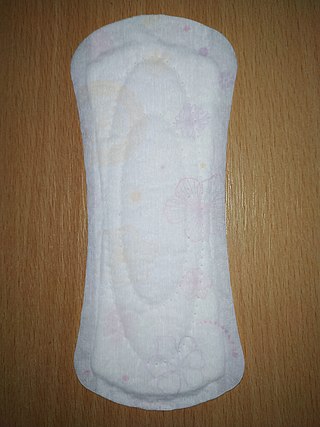Top Qs
Timeline
Chat
Perspective
Kotex
Brand of menstrual hygiene products From Wikipedia, the free encyclopedia
Remove ads
Kotex (/ˈkoʊtɛks/; KOH-teks) is an American brand of menstrual hygiene products, which includes the Kotex maxi, thin and ultra-thin pads, the Security tampons, and the Lightdays pantiliners. Most recently, the company has added U by Kotex to its menstrual hygiene product line.[1] Kotex is owned and managed by Kimberly-Clark, a consumer products corporation active in more than 80 countries.


Remove ads
History
Summarize
Perspective
The modern, commercial, disposable pads started in the late nineteenth century with the Hartmann company in Germany, and Johnson & Johnson in the United States.[2] In the UK, the Birmingham firm of Southall Brothers & Barclay was advertising "sanitary towels" in The Family Doctor and Home Medical Adviser in the early 1890s.[3]
In the United States, Kotex was launched in 1920 by Kimberly-Clark to make use of leftover cellucotton (wood pulp fiber) from World War One bandages.[4][5] An employee noted that the pads had a "cotton-like texture" which was abbreviated to "cot-tex" and then made the product name with alternate spelling.[6]
In the 1920s, Kimberly-Clark placed advertisements in the women's magazines Good Housekeeping and Ladies' Home Journal.[7] Although some readers were offended by the ads, the product's success led to more advertisements. Kimberly-Clark also promoted Kotex in Good Housekeeping by using intimate advice columnist Mary Pauline Callender.[8]
Originally sold in a hospital blue box at 12 for 60 cents, Victorian sexual prudishness caused slow acceptance until Montgomery Ward began advertising them in its 1926 catalog, reaching $11 million sales in 1927 in 57 countries.[9] It became one of the first self-service items in American retailing history after it was strategically placed on countertops with a special payment box so that the woman didn't have to ask a clerk for it and touch hands. Tampax appeared in 1936. Belts were needed until the 1970 introduction of Stayfree by Personal Products Co. and New Freedom Pads by Kimberly-Clark.
New Freedom is a former brand in the Kotex family. New Freedom was one of the first beltless pads manufactured in the early 1970s.
Remove ads
Product line
In August 2009, Kotex launched a premium sub-brand called Kotex Luxe in Singapore. It launched U by Kotex Tween, products aimed at girls aged 8–12 in the US in 2011.[10]
Recalls and defects
In September 2012, Kimberly-Clark issued a warning regarding a shipment of rejected Kotex tampons stolen and sold to the public. The company said the defective products posed only a minor health risk to consumers.[11]
In December 2018, Kimberly-Clark issued a recall of U by Kotex Sleek tampons due to findings that the product would sometimes break apart during removal, leaving behind fragments in the body that could require medical attention for removal.[12]
"Red Dot" controversy

In 2004, advertisements featuring a CG anthropomorphic red punctuation dot, known as the Red Dot, were televised with the slogan "Kotex fits. Period." That slogan was launched for the product's marketing campaign in October 2000.[13] The Red Dot, referring to a woman's "period", dissolves on the pad and explains how the pad comforts a woman during her sex life. This was viewed as a questionable form of verbal abuse because of the likelihood that the ads could be viewed by children who had no understanding of the terminology used in the ad.[14] In 2005, it was announced that the slogan would no longer be used for the product due to it having harmed sales of the product, realizing that its advertised meaning for "menstruation" was never meant to be publicized in front of children, even with the use of an animated red punctuation mark.[14]
Remove ads
Notes
References
Further reading
External links
Wikiwand - on
Seamless Wikipedia browsing. On steroids.
Remove ads

